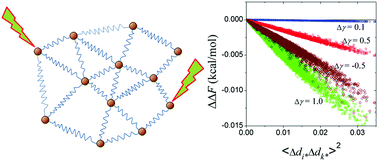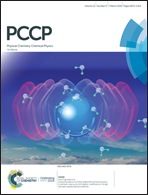Fluctuation correlations as major determinants of structure- and dynamics-driven allosteric effects†
Abstract
Allosteric control is essential for regulating biological functions whereby stimuli such as ligand binding at one site on a protein cause a response at a distant functional site. Correlations between different sites in proteins have been used widely in identifying allosteric sites and pathways, and in designing allosteric drugs. However, the deterministic connection between correlations and allostery remains unsolved, especially considering that there are various types of correlations. Here, we combine perturbation-theory analysis and numerical calculations to study both structure- and dynamics-driven allosteric effects in an anisotropic network model (ANM). The results reveal that the allosteries are determined by the correlation (covariance) of distance fluctuations, but are irrelevant to the usual displacement correlations or time-delayed correlations. Dynamics-driven allostery is weaker than structure-driven allostery by at least one to two orders of magnitude. The intrinsic allostery capacity decays with distance by an exponential law, with the resulting characteristic distance parameter lying in the range of 7–10 Å for structure-driven allostery and 4–5 Å for dynamics-driven allostery. The importance of the cutoff distance of the ANM is also addressed.



 Please wait while we load your content...
Please wait while we load your content...